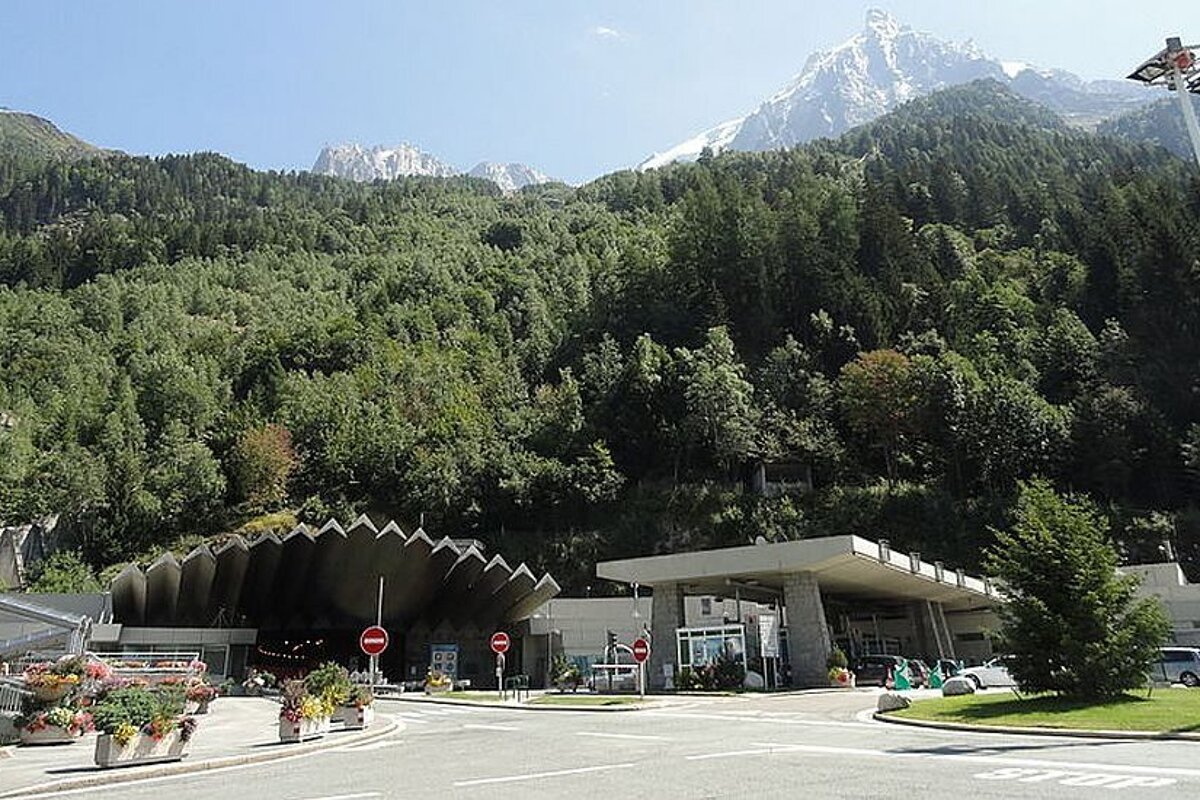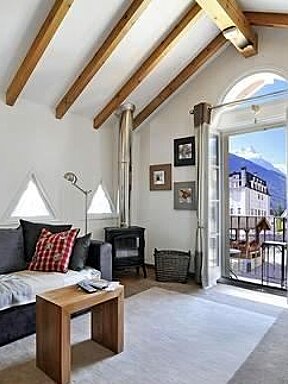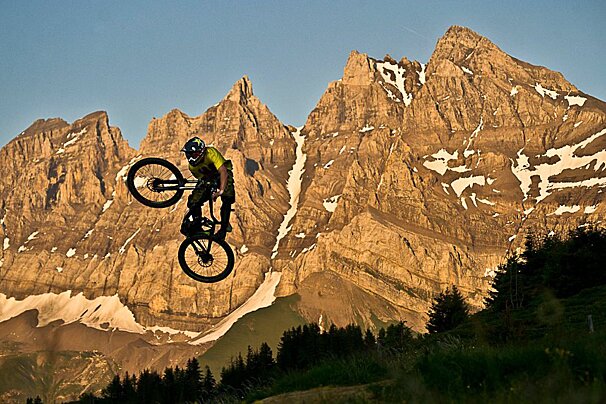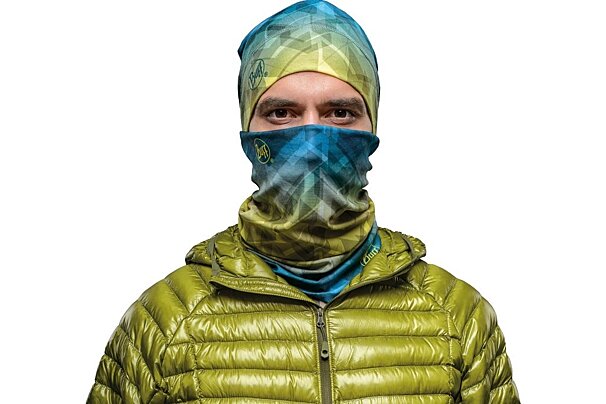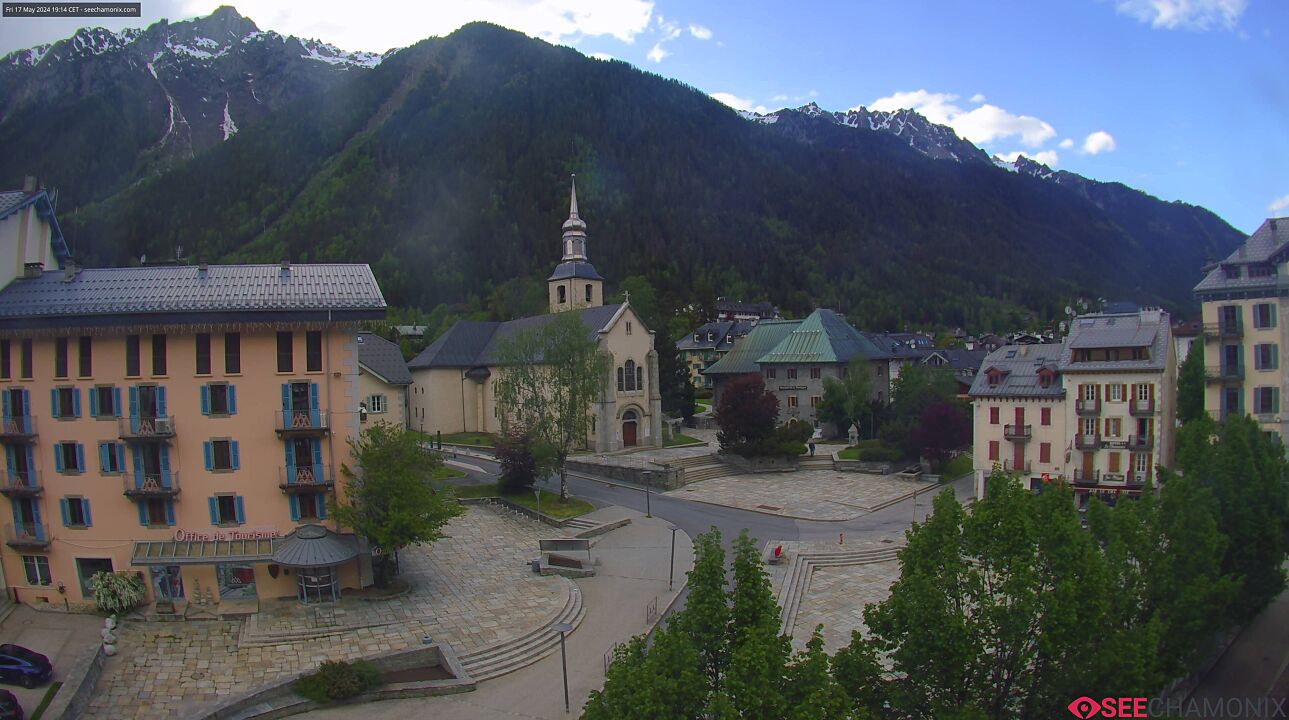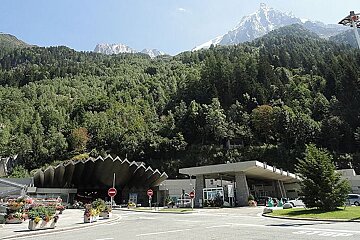
The Mont Blanc Tunnel
The Mont Blanc Tunnel links Chamonix (France) to Courmayeur in the Aosta Valley (Italy). Opened in 1965 mainly for tourism and regional trade purposes there is a great deal of controversy surrounding the use of the tunnel by international Heavy Goods Vehicles - particularly after a disaster in 1999 in which 39 victims died in a fire which was started by a truck.
You can read more about the Mont Blanc Tunnel fire in the History of Chamonix.
Some Tunnel statistics:
- Length: The tunnel is 11.6kms
- Width: 8.6 metres
- Journey Time: 17 minutes
- Altitude: 1274m on French side, 1381m on Italian side, with maximum height of 1395.5 halfway through the tunnel. At the midpoint, the rock above the tunnel is nearly 3kms thick!
- Border: The actual border between France and Italy is 7.6km into the tunnel from the French side
- Traffic Levels: In 2007, the average number of vehicles using the tunnel each day was measured at 4860 – 3201 light vehicles, 1616 HGVs and 42 coaches
Cost of driving to Chamonix
Management of the tunnel is the responsibility of both French and Italian authorities. The ATMB (Autoroutes et Tunnel du Mont Blanc) holds half the license for the Mont Blanc Tunnel, and the SITMB (Società Italiana per Azioni per il Traforo del Monte Bianco) is responsible for the other half.
More information and toll prices can be found here: Mont Blanc Tunnel - operator's website ATMB - Regional motorways and Mont Blanc Tunnel information ARSMB - Association pour le Respect du Site du Mont - Blanc.
Below shows the live closure calendar:
Road rules & regulations in France
Safety is the utmost priority for the operators of the Mont Blanc Tunnel and speed limits must therefore be strictly adhered to. Anyone caught flouting the speed regulations are liable to a hefty fine or confiscation of their licence.
- Minimum Speed limit: 50 km/h
- Maximum Speed limit: 70 km/h
- Minimum distance between vehicles: 150m
All moving vehicles must use dipped headlights whilst in the tunnel and stopping and/or parking on the carriageway is strictly forbidden, as is overtaking, U-turning and reversing. Each driver is issued with a Mont Blanc Tunnel safety leaflet on payment of the toll which explains the road and safety regulations in three languages (English, French & Italian). Motorists are also asked to listen to the radio whilst driving through the tunnel.
There are 120 cameras located within the tunnel which are able to detect the slightest incident. From the control room, 18 traffic safety operators monitor the tunnel 24 hours a day, using an automated assistance system which implements an appropriate operating procedure depending on the type of incident detected – eg. activation of message boards, ventilation, initiating emergency responses and sending warning messages to emergency response personnel. Fire engines are positioned at both entrances and in the middle of the tunnel so that the anticipated response time for any incident is estimated at no longer than 6 minutes.
Tolls
Toll rates for the tunnel differ depending on the class of vehicle you drive – eg. motorbikes, light vehicles or heavy goods vehicles. For a standard car, expect to pay around €43 for a one way and €53 for a return trip. There are frequent travel options available for those who use the tunnel regularly and in the winter, holders of the Mont Blanc Unlimited ski pass are entitled to reduced tunnel rates in order to access the skiing in Courmayeur. Click on the following links for more information on the Mont Blanc Unlimited ski pass and to find the latest toll prices.
Fines
There is a time delay on cars leaving the péages (toll booths) and signs to remind drivers to respect the speed limits and safe distances. Failure to respect these limits will incur severe on the spot fines or possibly the suspension of your licence. For example, driving dangerously close to the car in front could cost you €135 or even your licence. Failure to observe the speed limit could cost you between €90 and €750 and you can expect to lose your licence on the spot when you pay a fine of €750. Non-French & Italian drivers must pay the fines on the spot whereas nationals of either country have a month in which to pay.
NB. Road offences between Italy and France - A new measure has been introduced concerning road offences in France and Italy. Both countries will work together and as of the 1st of January 2016 all French motorists who commit a driving offence in Italy will receive a fine by post at their French address. The same will apply to any Italian motorists fined in France.
Information on any of the above matter or prices (tolls) can be found here.
